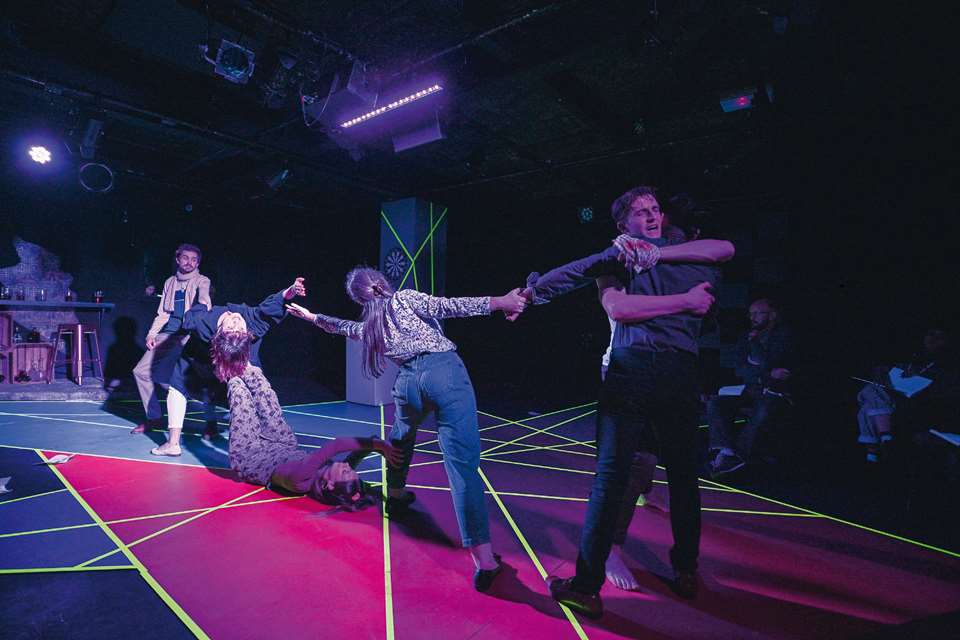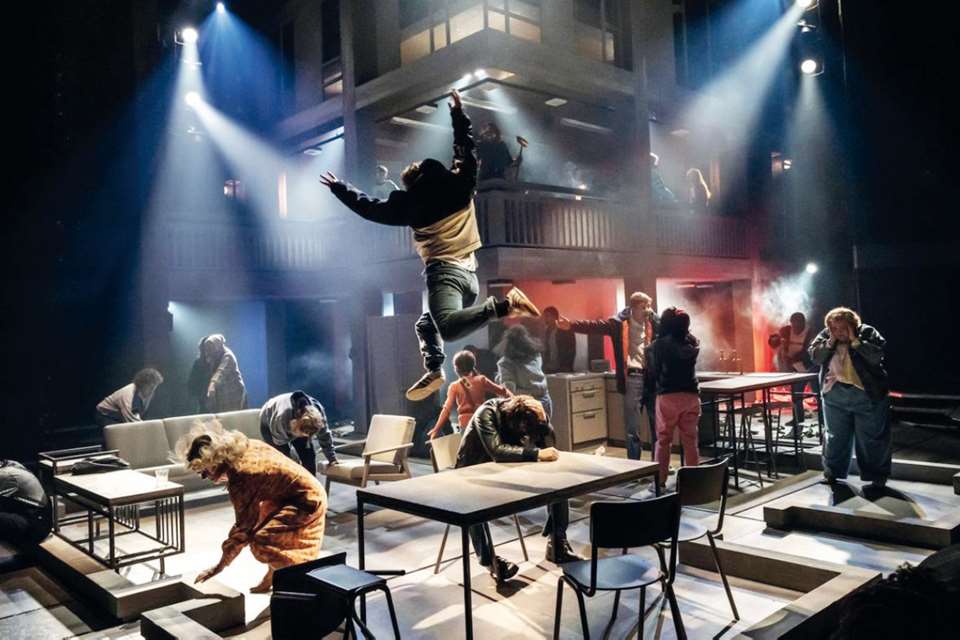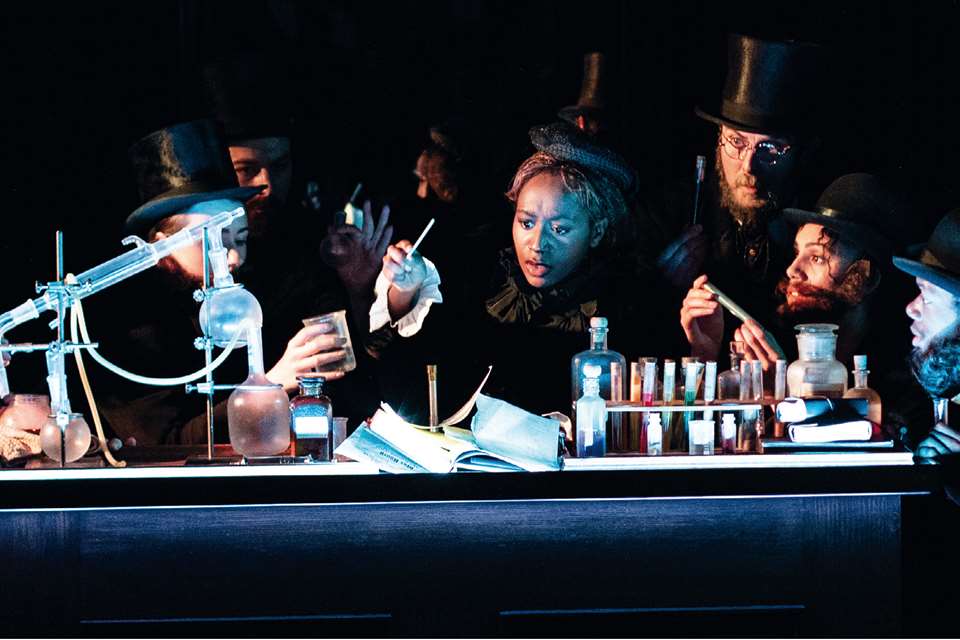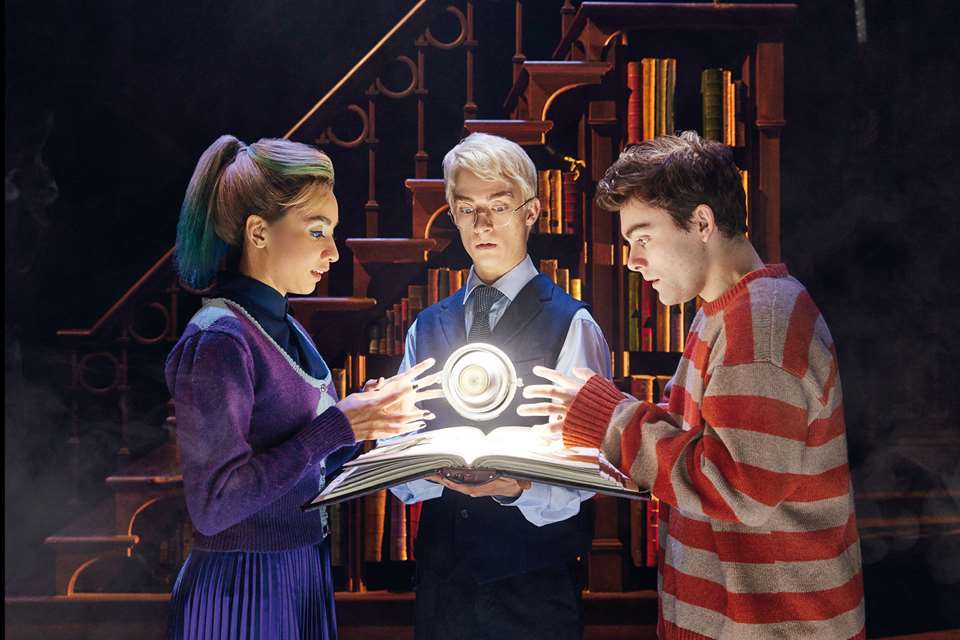A Dead Body in Taos
David Farr, Simon Floodgate
Thursday, February 1, 2024
In each issue of D&T, we bring you a teacher or academic's guide to a play for study with your students. Here, Simon Floodgate introduces A Dead Body in Taos.
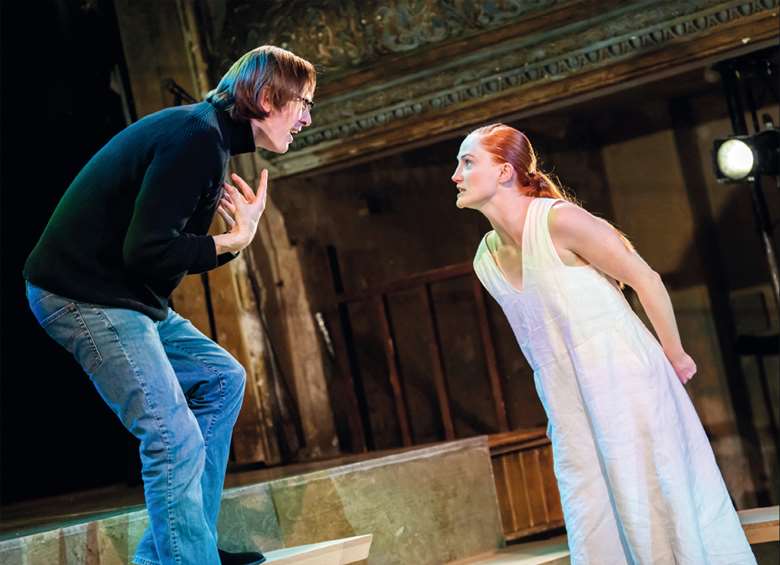
Tristram Kenton
A Dead Body in Taos by David Farr (known among other things for writing The Night Manager for the BBC) was co-commissioned, produced and originally toured by the independent theatre production company, Fuel Theatre in 2022.
The play begins with 33-year-old Sam arriving in Taos, New Mexico to identify the dead body of her estranged mother, Kath Horvath. It transpires that Kath has been colluding with the Future Life Corporation to prolong her existence beyond the natural span of her life to become immortal as a cyborg. The play juxtaposes Sam's contestation of Kath's decision to bequeath her money to the Corporation and to continue her life ‘virtually’ with key historical moments in Kath's life as a younger woman within counter cultural movements of the 1960s and 70s. These involve her life as an organiser of the student Vietnam protests at Kent State University in 1970, which famously resulted in the shootings of unarmed students; her attendance at a Californian commune; and life as a singer with a punk band in London, 1977 before making her fortune as an advertising designer in 1980s London.
It engages with the highly contemporary issues of technological advances in artificial intelligence and the ethics of ‘mind uploading’. In so doing it queries what it means to be ‘free’ and ultimately what it is to be defined as human.
Themes
The technology associated with ‘mind uploading’ is predicated upon the use of DNA as a sophisticated information storage system. The digital uploading of this information suggests that our human identities can be prolonged beyond the life span of our organic bodies to be immortalised within a virtual reality. The play debates this ‘freeing of the mind’ from the body progressing the debate of Cartesian dualism - ‘I think, therefore I am’.
Farr employs this science fiction as a premise to explore themes of freedom and responsibility as key elements of human identity. Kath spends her young life striving for freedom within the counter cultural movements of 1960s student peace protests and the anarchic revolt of the 1970s punk scene. Is her pursuit of freedom idealistic or selfish? As an organiser of the protest how implicit is Kath in the deaths and woundings of the students at Kent State University?
Indeed the play questions the very notion of freedom from embodied attachment. Not only does Kath ultimately detach her mind from her body but she spends her life struggling with the attachment and responsibility of close human relationships. She is unable to form lasting loving relationships with partners or her own child, Sam. In striving for freedom she shirks her responsibilities to intimate and familial relationship.
The connection of the personal and the political is focussed within the theme of mother-daughter relationships. In the Californian commune, Kath is provoked into revealing her subconscious anger with her own mother and this is, of course, then replicated for Sam in her estranged relationship with Kath. Ultimately, Sam is only able to attain emotional freedom and to effectively heal and continue with her life, through destroying the Kath Cyborg.
In performance
As a co-commission between Fuel, Theatre Royal Plymouth, and Warwick Arts Centre with support from Bristol Old Vic, the play undertook a short tour to these venues in the Autumn of 2022. Intriguingly for a play set largely in the imminent future, its London run took place at Wilton's Music Hall in the City's East End. This oldest surviving Victorian Music Hall is a listed building that has survived decades of East End history, including the 1936 Mosley March and the London Blitz. Derelict for some years its carcass has been repaired as opposed to discarded, and it is now a thriving venue with its origins and identity caked within its walls.
Exploring the play
Key to exploring the text within the embodied format of live theatre is the question of how to stage the digital. In particular, how is the Kath Cyborg represented? There could be practical exploration using multi-media with onstage live projection of an offstage Kath Cyborg in the style of, for example, Robert LePage or an Ivo Van Hove production. The director, Katie Mitchell, has proposed experiments in this vein making use of smart phones to project live footage in juxtaposition with live onstage action.
The initial Fuel production made simple use of a standing wooden frame, subtly lit, with the actor playing Kath Cyborg standing within the frame as if on a computer screen. The actor's voice was distorted somewhat to differentiate from the actor as Kath at other points of her lifetime.
Students could explore the physical and vocal portrayal of Kath Cyborg, enhancing some key elements of identity to create a more two-dimensional portrayal as opposed to a fully rounded younger Kath. The Cyborg version is not without warmth so how can a performance of this version of the character be more than simply robotic?
Staging also incorporates the relevant historical contexts of 1970s Kent State University in Ohio and the associated shootings, the UK Punk scene of 1977 as well as the 1980s fashion advertising agency world in which Kath conceives Sam. Farr dictates various specific songs to indicate these within the text and costume would also be highly relevant, but how is the atmosphere of these eras perhaps further represented? Research into these distinct historical contexts might facilitate further employment of photographic stills or video for projection.
There is also the atmosphere of the New Mexico desert and the Future Life Corporation at Taos. Farr chose this because of its links with abstract US artist, Agnes Martin. She is regarded as a muse for Kath in the play and during a period when she struggled with schizophrenia, Martin came to Taos to isolate and meditate in this area of the New Mexico desert known as a place of spiritual reflection for Native Americans.
Resources and links
-
A series of podcasts focussed upon the ethics of digital immortality and implications of AI: digital.fueltheatre.com/events/the-ethics-of-digital-immortality-and-digital-bodies
-
Two intriguing TED talks from the geneticist, Juan Enriquez, concerning human evolution in the context of gene editing technology:
- Enriquez, Juan, What Will Humans Look Like in 100 Years?
- Enriquez, Juan, The Age of Genetic Wonder
-
Museum of Modern Art resources on the artist, Agnes Martin: moma.org/artists/3787
-
The philosopher, Bernard Williams analyses the Karel Čapek play about Elina Makropulos, who becomes bored, indifferent and cold after 342 years of immortality: Williams, B. (1973). ‘Ch. 6: The Makropulos Case: reflections on the tedium of immortality’ in Problems of the Self – Philosophical Papers 1956-1972. Cambridge: Cambridge University Press, pp.82-100


